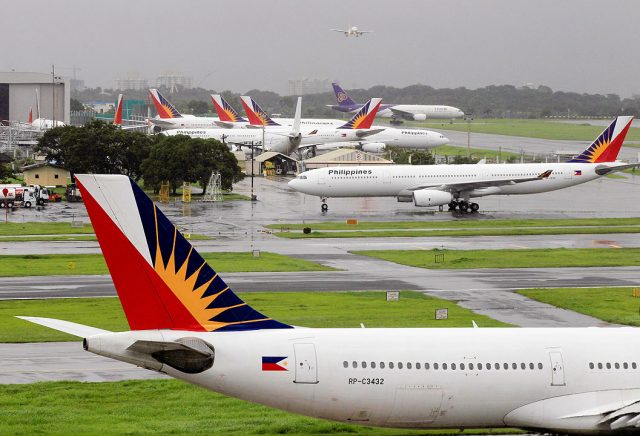Henry Kissinger, once described as elder statesmen’s elder statesman, had been consistently prescient until he expired at the age of 100 in November 2023. He was virtually prophetic about the geopolitical shifts following the proliferation of nuclear weapons that accompanied the Cold War between the United States and the then Soviet Union and their respective allies. Following his thesis in favor of limited nuclear war, both the US and the Soviet Union literally pursued his point and raced against each other in developing their nuclear weaponry.
What is most amazing is that Kissinger’s biographer, Niall Ferguson, wrote in his foreword to the last book of the former US Secretary of State and National Security Adviser, Genesis: Artificial Intelligence, Hope and the Human Spirit (2024), with technology visionaries Microsoft’s Craig Mundie and Google’s Eric Schmidt, that as early as 1968, Kissinger was already thinking about computerization. To him, this could assist US authorities process a huge volume of information for formulating optimal public policy. Ferguson quoted his obscure January 1968 paper, submitted to no less than Nelson Rockefeller, then Governor of New York, to avoid data overload. Kissinger was gunning for a set of action-options available to the authorities. To achieve this, Ferguson documented that Kissinger proposed to make major investments in programming, storage, retrieval, and graphics.
True to form, Kissinger attempted to acquire such technology in his first year in the White House as then US President Richard Nixon’s National Security Adviser. But the Central Intelligence Agency (CIA), for understandable reasons, declined his request. Ferguson was not speculating when he wrote that “Kissinger without a computer was as much as the intelligence community could handle.”
After that 1968 paper, Ferguson referred to Kissinger’s June 2018 essay, “How the Enlightenment Ends,” published in The Atlantic for his view on technology and artificial intelligence (AI). In that essay, he argued that the phenomenal revolution in technology now in progress was actually, in some account, “transforming human knowledge into an act of mechanical accumulation, a gigantic database.”
In brief, Genesis envisions several scenarios, including the loss of control of an existential race between multiple actors trapped in what it calls security dilemma; the potential dominance by the winner of such race without checks and balances; multiple centers of superior intelligence in the global community; winning outfits could develop a generalized political, social, economic, and military control; greatest relevance of AI in religious structures; and untrammeled, open-source access to new technology could likely result in smaller groups with substandard but still significant AI capacity.
While Mundie and Schmidt must have been behind the book’s excellent grasp of AI, its new forms and their consequences, it must be Kissinger’s insights that connected the dots between AI and human responses to it affecting human relationships, exploration of knowledge, conduct of diplomacy, and the international system.
AI is raising a question of human survival.
“AI’s future faculties, operating at inhuman speeds, will render traditional regulations useless.” Some forms of controls will be unquestionably needed. The world is challenged by having to find technical metrics for establishing safeguards in every AI system. Nations and international organizations by consensus must design new political modes for monitoring, enforcement, and crisis response.
What is most relevant to us is Genesis’ proposition about economic prosperity. Abstracting from various epic stories of “machines of bounties throughout the world” contained in the Mahabharata, the Irish myth of the god Dagda, and one piece of Japanese lore, AI developers also contemplate machines or programs that would lead to “fully stocked granary, this magic mill, this cornucopia overflowing with flowers, fruit and corn.”
The book clarified, as the mythologies warned, that creation — or in today’s economese, production — will not be enough. Optimizing AI by development and deployment requires suitable institutional changes and wise policy design. This means AI should be used to liberate people from the bonds of servitude, a modality that would get rid of human exploitation and oppression, a future characterized by less poverty and inequality.
No doubt, if the economic pie enlarges, and the actual amount for redistribution actually goes up, the human standard of living is bound to rise. This sounds easier said than done.
But AI in this context actually makes it possible to displace labor and substitute it with machines. AI will also enable economic agents to research and develop increasingly cheaper and more abundant sources of raw materials. In manufacturing, AI could reduce the amount of capital needed to produce a certain scale of output. In services, AI could complement human labor with greater efficiency and creativity. It is also possible by this time that AI could be deployed to generate synthetic substitutes through appropriate computing architecture. AI itself could redesign factories that make its own constituent components!
With this breakthrough, AI could then usher in a new era of abundance, a time when all humanity’s basic needs are accessible to all, a time when hope, especially among the underprivileged, is at its highest. This could signal what the book termed as relaxing the grip of the paradigm of scarcity on our psychology. Equally important, an age of abundance could lift up that sense of pessimism “induced by our obligation to work as a means of survival.”
Kissinger and his co-authors also cited Sam Altman of OpenAI who concluded that while capitalism is a powerful engine of economic growth, the price of progress is inequality. Those who invested in knowledge-based assets are making a killing period after period.
Genesis therefore proposes, as Altman proposed, to tax the “two assets that will make up most of the value in the world.” These are: 1. companies which develop, maintain, and use AI; and, 2., land which remains fixed. If indeed there is substitution of labor by machine, and labor is not entirely responsible for the value created, there is a case that such value can be shared. Governments can serve as redistributive agents with AI companies as the target of taxation.
True, this fiscal measure could trigger potential social tension but this is how to mitigate the cost of capitalism and prosperity.
Genesis also envisions other possibilities for establishing equity in the age of AI. A stock market-like mechanism can be developed to enforce the automatic global assignation of divisible units of wealth associated with the increasing profits of AI models. The authors also suggest that ownership of the means of production can be glossed over in favor of the actual distribution of AI’s ultimate benefits. The issue here is logistics. It would demand huge investment in a monitoring system to achieve equitable redistribution based on some robust standard. The other option is to allow exclusive ownership of AI invention and its returns to incentivize constant innovation but only for a limited period. Beyond that, it would be put out for common use and gain.
No one can dispute the caveats, also borrowed from Altman, and one of these is that “future decision-makers must take care not to entrench once again the sorts of social and economic inequalities that spread outward from the Industrial Revolution before beginning to be corrected, much too slowly, through more human-directed structures of control.”
Beyond the world of abundance, there would remain issues of reconciling people on the basis of faith, race, family lineage, education, or any other category. Human stupidity cannot be underestimated with respect to predicting the long-term effects of technology. Kissinger, Mundie, and Schmidt were humble enough to acknowledge that their “optimism may be unjustified and our apprehensions misplaced.”
IN THE PHILIPPINES
In the Philippines, one can argue that there is some degree of recognition of the innovative uses of AI and the urgency of managing the associated risks. The Department of Trade and Industry actually launched, in May 2021, the country’s AI roadmap consisting of digitization infrastructure, research and development, workforce development, and regulation. The country, in the same year, joined other countries in adopting the UNESCO recommendation on AI ethics that upholds the centrality of human rights in regulatory frameworks and legislation on the development and use of AI.
Two years later, in 2023, the Philippines also became a party to the Bletchly Declaration which recognizes the importance of protecting human rights and the principles of transparency, fairness, and safety, among others, in recognition of AI’s “capability to manipulate content or generate deceptive content.”
Various laws have also been passed by Congress including the Philippine Digital Workforce Competitiveness Act, Second Congressional Commission on Education Act II on digital transformation, the Tatak Pinoy Act on strategic investment priorities plan to address any technology skills mismatch. In fact, the Philippines seems to be doing the right things on digital transformation because we rose in the latest Government AI Readiness Index of 2024, published by Oxford Insights, based on some 40 indicators involving 188 countries. From 65th, the Philippines climbed to 56th. Of the three core pillars of government, technology, data and infrastructure, the Philippines scored high in government but scored low in technology.
It’s quite clear that the Philippines has just begun its AI journey. Genesis should be able to provide the useful markers in charting the country’s AI roadmap. It’s good to be more forward-looking in terms of the regulatory framework, but it’s more elementary to first invest in and nurture a culture of discovery and excellence in digital transformation to pole vault this nation to the challenging world of generative AI. It’s not enough that we are aided by chatbots in doing some research and preparing some speeches or essays on public policy.
What we need is a large ecosystem of AI-enabled systems and applications to advance material sciences and maximize digital connections to permit us to abandon that world of scarcity in favor of abundance. That would signal the day when working becomes a matter of choice. With good “systems for distribution, connection, participation and education, humans — empowered and inspired by AI — may continue working not for pay but for pleasure and pride.”
That would be the day…
Diwa C. Guinigundo is the former deputy governor for the Monetary and Economics Sector, the Bangko Sentral ng Pilipinas (BSP). He served the BSP for 41 years. In 2001-2003, he was alternate executive director at the International Monetary Fund in Washington, DC. He is the senior pastor of the Fullness of Christ International Ministries in Mandaluyong.























